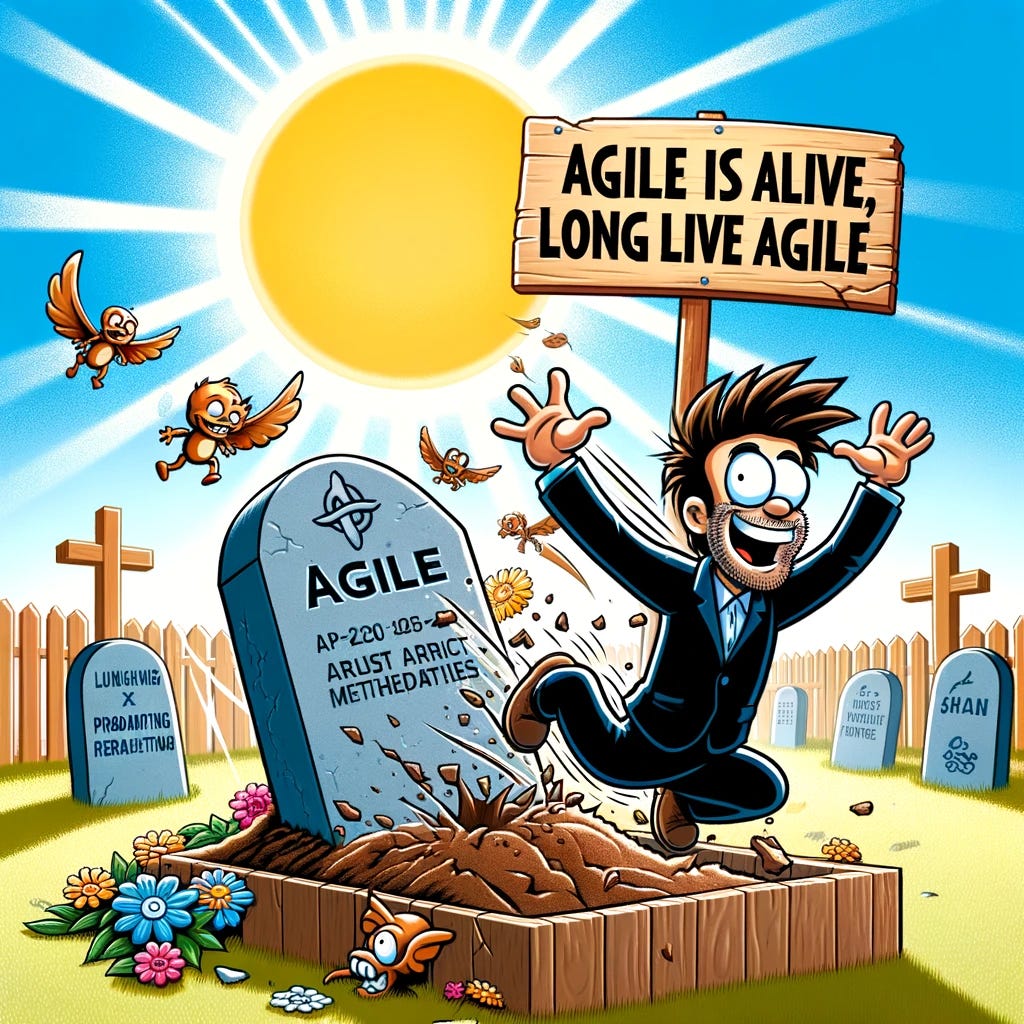Agile is Not Dead, It is Misused
A Perfect Fit for a Product-Centric Approach
Introduction
Two decades since the Agile Manifesto first outlined a revolutionary approach to software development, its core values continue to hold significant relevance. However, the adoption of large frameworks has, in some instances, diluted the essence of Agile, leading organizations into the pitfalls of rigid structures and processes. This blog post aims to re-examine the Agile values in the context of today’s challenges, particularly in a post-Covid world, and suggests a shift towards a more product-centric Agile practice.
The Agile Values Revisited
The Agile Manifesto emphasizes individuals and interactions over processes and tools. Yet, in the remote work era, these values are being tested. The challenge now is to maintain effective communication and collaboration in virtual environments while upholding the spirit of Agile. Teams must find new ways to foster interactions that are as meaningful and productive as those in physical office spaces.
The Trap of Big Frameworks
Scaling Frameworks, like SAFe or even “The Spotify Model“ sold by Management Consultants, introduces a risk of becoming too prescriptive, overshadowing Agile's fundamental principles. Teams often find themselves caught up in the mechanics of the framework, losing sight of Agile's flexibility and adaptability. This overemphasis on process can stifle creativity and hinder rapid response to change – elements that are at the heart of Agile.
Scrum’s Evolution: Emphasizing Product Goals
Scrum have successfully mainstreamed Agile practices, so teams have gotten far, but there is something missing.
“With respect to software development, I think at the team level agile is widely practiced It’s the dominant form of how teams organize. In many IT teams, the alignment to business outcomes is missing.”
Dave West, CEO of Scrum.org, 2021
Recognizing this challenge, organizations like Scrum.org have made efforts to adapt, such as incorporating the concept of a product goal into the Scrum Guide in the 2020 update. This shift is a step towards refocusing on the product - not just the process. It's about ensuring that Scrum, or any Agile framework, serves as a means to an end (delivering valuable products) rather than becoming an end in itself.
Agile Is Not Dead: It’s Evolving
Declaring Agile as obsolete would be premature. Instead, it's evolving, and part of this evolution involves integrating product discovery practices. Agile was never meant to be stagnant; it was designed to evolve with the times and challenges. The current era demands that we revisit and realign Agile practices with their original intent – delivering value quickly and efficiently while responding to change.
Integrating Product Discovery Practices
Product discovery practices provide a framework for understanding user needs and market dynamics, ensuring that what is being built truly addresses real problems and offers value. These practices align well with Agile principles, emphasizing rapid learning, experimentation, and adaptation based on feedback.
Conclusion: A Call for a Product-Centric Agile Approach
In conclusion, while Agile values and principles remain as valid today as they were two decades ago, their application needs to evolve. A product-centric approach, blending Agile practices with product discovery methodologies, offers a pathway for teams to truly embrace the agility and responsiveness that the Agile Manifesto advocates. It's about evolving Agile to meet the demands of a rapidly changing world and ensuring that it continues to be a powerful tool for creating products that matter.
We have tried our best to create a tool for teams to thrive in a remote work environment while staying true to Agile's core values. It's about evolving Agile to meet the demands of a rapidly changing world and ensuring that it continues to be a powerful tool for creating products that matter.




